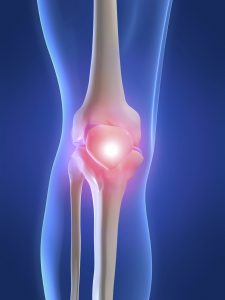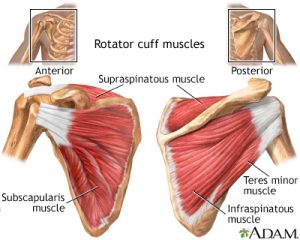Brian Schiff’s Blog
Injury Prevention, Sports Rehab & Performance Training Expert
Improving rotational strength and stability in the torso, shoulders and hips is important for injury prevention and performance. The ability to resist and control rotational loads can reduce stress on the body during transverse plane activities and deceleration during sport. This exercise will demonstrate how to train rotational stability in an unstable manner using water with the Aktiv AQUA Bag. The video below is my latest online column for PFP Magazine.
The water provides an unstable training environment that is effective for beginners and advanced users. You can read the entire online column by clicking here.
I came across some very good reads on Twitter last week week that I wanted to pass along. The first is a blog post by Rich Willy, a PT, professor and researcher who specializes in running and running related injuries. If you or any of your friends have suffered from nagging IT Band pain, this is a must read. In this post, he discusses proper treatment strategies:
The second pearl involves long toss and force on the elbow. Ever wonder how advising a pitcher to reduce his throwing intensity actually impacts velocity and torque on the elbow? It seems that decreasing effort level by 25% and 50% does not equate to the same reduction in actual velocity with a study using the motus sleeve. Read more below:
Baseball Pitchers’ Long Toss Perceived Effort & Actual Velocity
Finally, there has been much discussion about return to sport assessment after ACL reconstruction. Lately, many have begun to question how effective hop testing really is when it cones to determining readiness to return to sport. I use several assessments (one of which is hop testing), but I also feel psychological readiness is crucial.
This article sheds light on the connection between proper single limb landing mechanics and psychological readiness.
Association of Psychological Readiness for RTS after ACLR and Hip and Knee Landing Mechanics
Bridging is a fundamental exercise to promote hamstring and glute strength. In addition to hip strength, I look for opportunities to enhance anti-rotation/pelvic stability with many bridging progressions due to the weakness and asymmetries I see in my clinic. It will also facilitate hip dissociation.
The stability ball provides an element of instability that can further challenge hip and pillar stability. This exercise is big bang for your buck exercise that can be used in rehab and training circles. Check out the video below that is part of my ‘Functionally Fit’ column for PFP Magazine.
Click here to read the entire column.
Knee pain is prevalent among adolescents and active adults. Patellofemoral pain and osteoarthritis are the most likely causes of pain. It may be present with squatting, lunging, prolonged sitting, kneeling, running, jumping or twisting.

Research seems to support a combination of hip and knee strengthening as a primary line of defense and treatment for knee pain. Interestingly, males with PFP do not seem to have weakness in the gluteus medusa like their female counterparts. The link below is an abstract that speaks to this difference between the two groups:
https://www.ncbi.nlm.nih.gov/pubmed/30090674
Other modalities used to address anterior knee pain include patellar bracing/taping, blood flow restriction training, dry needling/acupuncture and soft tissue work seems to bring more questions accordion to some experts.
Click here to read the 2018 Consensus statement on exercise therapy and physical interventions (orthoses, taping and manual therapy) to treat patellofemoral pain from the 5th International Patellofemoral Pain Research Retreat.
Clinically, I have seen good results with the following:
1. Activity modification
2. Glute and quadriceps strengthening
3. Blood flow restriction (BFR) training
4. Sequential and progressive loading based on pain response
Shoulder pain is one of the most common issues I treat in my clinic week to week, There are many causes of pain, but the most common cause of shoulder pain in active individuals typically involves the rotate cuff. These relatively small muscles are called upon to manage high and repetitive loads during sports, work and daily activity.
In some cases, there is just mild inflammation that does not limit function. In there cases, there is more acute pain that makes it hard to even raise the arm or use it for the most basic things. It can be difficult to really discern if there is significant injury as even acute tendinitis can be debilitating.

Image courtesy of Medline Plus
In a blog post I wrote for my work site, I discuss the differences between tendinitis, tendinosis and tears of the rotator cuff. Click here to read more.
If you have rotator cuff pain and are looking for a simple at-home rehab plan or injury prevention program, check out my training guide at www.rotatorcufftraining.com.

